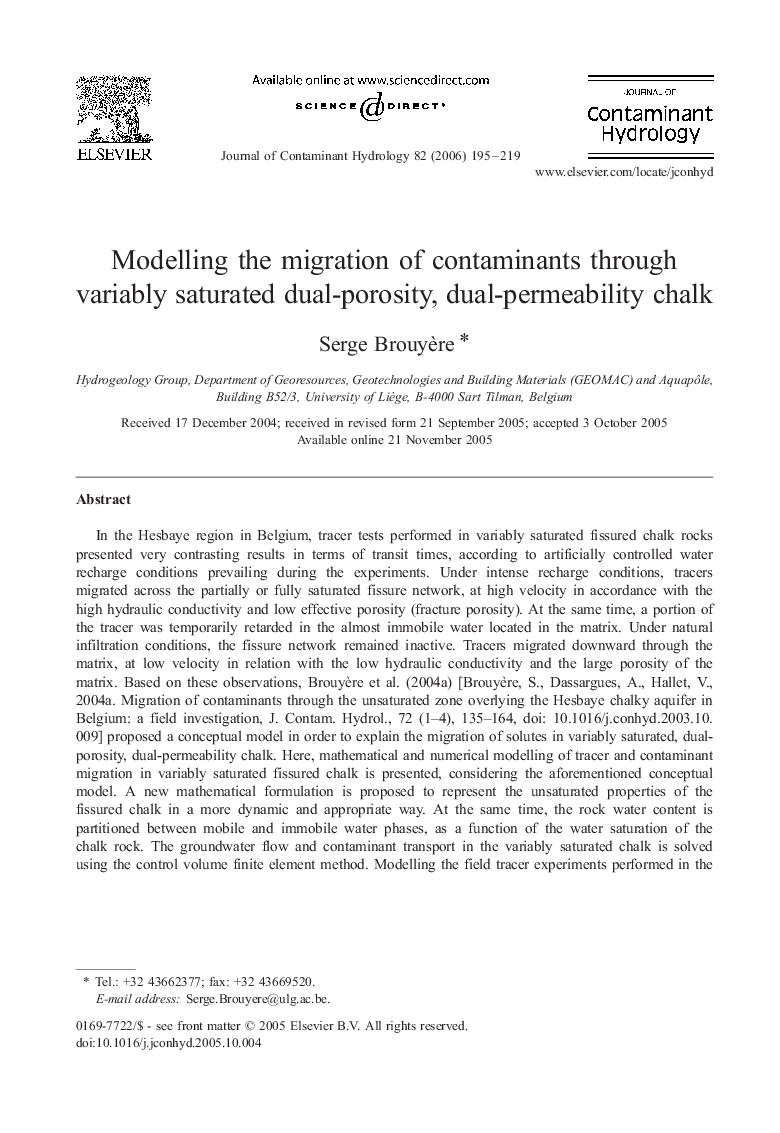| Article ID | Journal | Published Year | Pages | File Type |
|---|---|---|---|---|
| 4547814 | Journal of Contaminant Hydrology | 2006 | 25 Pages |
In the Hesbaye region in Belgium, tracer tests performed in variably saturated fissured chalk rocks presented very contrasting results in terms of transit times, according to artificially controlled water recharge conditions prevailing during the experiments. Under intense recharge conditions, tracers migrated across the partially or fully saturated fissure network, at high velocity in accordance with the high hydraulic conductivity and low effective porosity (fracture porosity). At the same time, a portion of the tracer was temporarily retarded in the almost immobile water located in the matrix. Under natural infiltration conditions, the fissure network remained inactive. Tracers migrated downward through the matrix, at low velocity in relation with the low hydraulic conductivity and the large porosity of the matrix. Based on these observations, Brouyère et al. (2004a) [Brouyère, S., Dassargues, A., Hallet, V., 2004a. Migration of contaminants through the unsaturated zone overlying the Hesbaye chalky aquifer in Belgium: a field investigation, J. Contam. Hydrol., 72 (1–4), 135–164, doi: 10.1016/j.conhyd.2003.10.009] proposed a conceptual model in order to explain the migration of solutes in variably saturated, dual-porosity, dual-permeability chalk. Here, mathematical and numerical modelling of tracer and contaminant migration in variably saturated fissured chalk is presented, considering the aforementioned conceptual model. A new mathematical formulation is proposed to represent the unsaturated properties of the fissured chalk in a more dynamic and appropriate way. At the same time, the rock water content is partitioned between mobile and immobile water phases, as a function of the water saturation of the chalk rock. The groundwater flow and contaminant transport in the variably saturated chalk is solved using the control volume finite element method. Modelling the field tracer experiments performed in the variably saturated chalk shows the adequacy and usefulness of the new conceptual, mathematical and numerical model.
